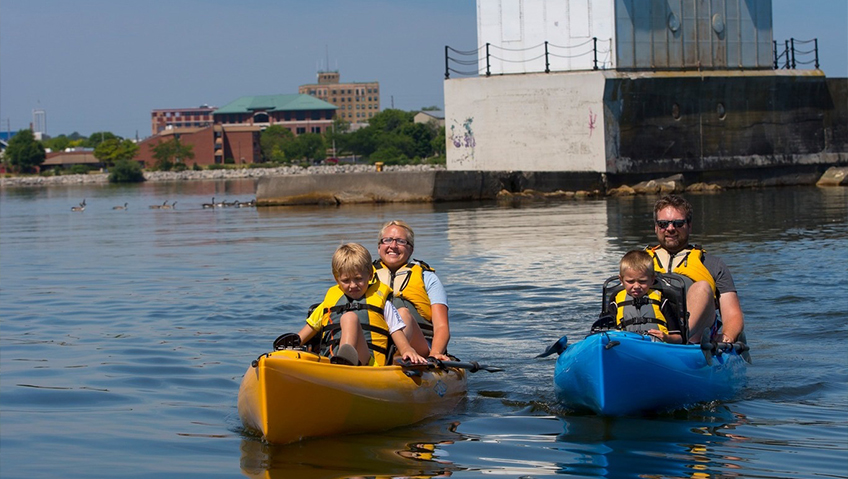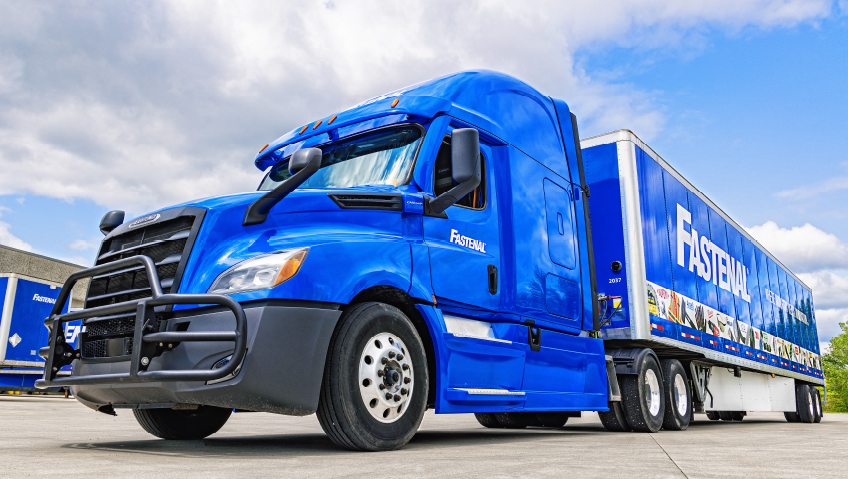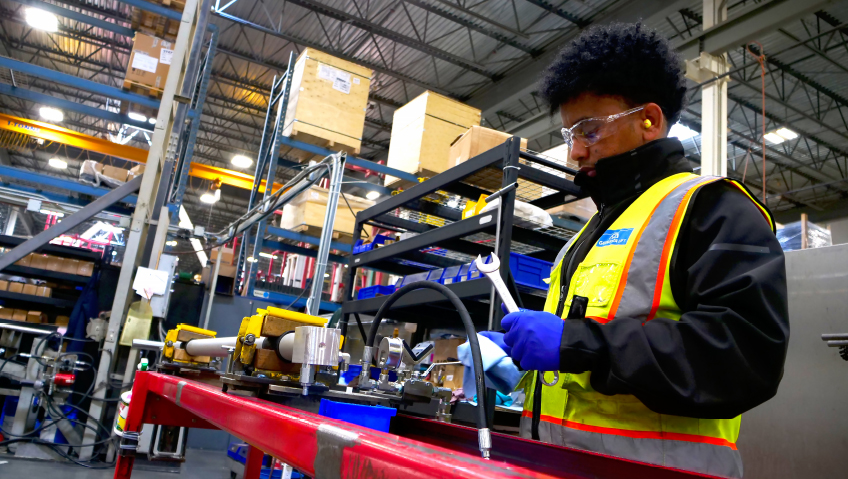Over 20 years ago, Wisconsin’s Manitowoc County faced one of its biggest challenges when its largest employer announced it was leaving. For the community, its businesses, and government alike, this signaled the importance of diversifying the economy and ushered in the creation of Progress Lakeshore, Inc. The organization focuses on three key areas: retention, growth, and attracting new businesses and talent to Manitowoc County.
“Here we are, after 20 years, and our focus is now on talent attraction as opposed to business attraction to get people jobs,” says Executive Director of Progress Lakeshore, Inc., Jamie Zastrow. “That’s the evolution of economic development.” Prior to becoming Executive Director almost five years ago, Zastrow dedicated much of her career to the area, serving as Executive Director of the Manitowoc County Home Builders Association and Mainly Manitowoc, volunteering for the Northeast Wisconsin Regional Economic Partnership and the Wisconsin Maritime Museum’s Board of Trustees, and serving on the Chamber of Manitowoc County.
“I love living here,” says Zastrow, who recently completed the Certified Economic Developer (CEcD) certification program from the International Economic Development Council (IEDC). “[This accreditation] builds trust with government officials, partners, and investors, and shows our team is led by someone who knows how to develop strategies, tailor to our community, face challenges, and follow the training protocol of the IEDC, which is well-respected nationwide for their resources. It brings that credibility factor to the conversation when discussing business and talent attraction, retention, and growth when talking to site selectors and understanding the industry.”
Rich shipbuilding history
Created a dozen years before Wisconsin’s 1848 statehood, Manitowoc County was settled by immigrants from Germany, Norway, and Ireland. Owing to its access to the Manitowoc River, Lake Michigan, and many inland lakes, streams, and rivers, the area became known for shipbuilding and accessible transportation by water.
Founded in the early 1900s, the Manitowoc Shipbuilding Company soon became important to the local economy, and a major employer. Starting off building ferries and vessels for use on the Great Lakes to haul iron ore, WWII saw the company building dozens of naval ships and submarines.
Although the company closed in 1968, its legacy—and those of other shipbuilders—endures in other area businesses and the Wisconsin Maritime Museum, one of the region’s biggest maritime museums. Along with over 60,000 square feet of model ships, boats, interactive displays, and hands-on learning, the museum features an operating steam engine. The truly adventurous can stay overnight on the USS Cobia, a restored WWII submarine. “The area was all about shipbuilding, and we are a WWII heritage city because of that.”
Port of Manitowoc and Lake Michigan shore
Along with major highways like Interstate 43, U.S. Highway 10, and Highway 32, and railroad via Canadian National, the county is readily accessible through the Port of Manitowoc. “The port is really the unique transportation asset,” says Zastrow. A deep draft commercial harbor, the Port of Manitowoc is located on Lake Michigan’s west coast, in the geographic center of North America.
“We are really in the heart of North America,” says Zastrow of the area, which offers access to the Atlantic via the St. Lawrence Seaway and to the Gulf of Mexico via the Mississippi River. “It provides great transportation for businesses that need logistics options, and using the water for shipping and transportation is better for the environment.”
Federally authorized, the port’s size and capabilities make it ideal for transportation, manufacturing, shipbuilding, and more. The Manitowoc Harbor channel’s lake approach is some 2,600 feet long and 800 feet wide, with bridge clearances of 95 feet at the 8th Street Bridge and 80 feet at the 10th Street Bridge. Port services include warehousing, stevedoring, refueling, ship building and repair, and other amenities.
Along with its marinas, boating and outdoors businesses, the Wisconsin Maritime Museum, and the port, the area is central to the Wisconsin Shipwreck Coast National Marine Sanctuary. Designated in 2021, the sanctuary “provides stewardship for our nation’s maritime heritage in Lake Michigan,” according to its website.
“There are a lot of shipwrecks in Lake Michigan and local organizations do a lot of educational work on this topic,” says Zastrow. “We build ships, celebrate them, and talk about them above and below the water.”
The sanctuary—co-managed by the National Oceanic and Atmospheric Administration (NOAA) and the State of Wisconsin—is a steward for 30-year management of the site. To date, there are 36 known shipwreck sites of vessels that played a key role in building America between the 1830s and the 1930s. According to the sanctuary, 27 of these vessels are listed on the National Register of Historic Places, and research suggests that another 60 shipwrecks may be yet to be discovered.
A working harbor to this day, Manitowoc proudly celebrates its past through the museum and sanctuary, while working on developing the area for future generations. Popular with anglers, boaters, and nature-lovers of all ages, the area attracts water-related businesses all along the 35.8 mile-long Manitowoc River.
Indeed, the waterfront is one of Manitowoc’s greatest assets and the county is experiencing plenty of riverfront development, with room for more. One of the most ambitious projects is the River Point District Development, a multi-phase, mixed use site. Sustainable engineering, environmental consulting, and architecture company Stantec worked with the city to secure $2.9 million in U.S. Environmental Protection Agency Brownfield Grants and over $1 million in state funding.
“Phase 1 included the design and construction of roadway and pedestrian infrastructure to support various projects, the Petskull Brewing Company, and the 87-unit River North Apartments,” states Stantec. Phase 2 involved infrastructure construction to support condominiums, a restaurant, park, multiuse trail, and other amenities.
The area is also home to the Bay Shore/Memorial Drive Mixed Use Development. On the Manitowoc-Two Rivers’ main corridor in the city’s TIF District 18, the prime development site—conveniently accessible from I-43 via Waldo Boulevard—offers gorgeous, unobstructed views of Lake Michigan. All lots will include utility connections including water and gas. New luxury apartments have already been built, and condominiums are in the works.
“It is exciting to see developments being built,” says Zastrow of the area, which features great beaches, trails, festivals, and activities including sand sculpting, bike races, volleyball, and more. “The lifestyle amenities are great,” she says.
Ideal for business
Manitowoc County has a well-earned reputation as a hardworking, dedicated middle-class community. Comprising about 1,500 square miles, it is home to a current population of 82,431 and growing. For residents, Manitowoc offers a reasonably low cost of living; for businesses, there is an available talent pool and lots of room for expansion.
“We have a lot of businesses in the manufacturing arena who are in the 250 to 500 employee range, and that’s what you really want to see when you are trying to diversify your economy and not be reliant on one employer,” Zastrow explains. Agriculture remains a prominent industry, including growers and food processors making frozen and canned products.
Presently, one City of Manitowoc industrial park is full, and plans for a second industrial park were unveiled earlier this year. The park will be located at Hecker and Viebahn Streets on the west side of I-43. The city is targeting manufacturing, tech, and emerging industries to occupy the 93.5-acre site.
The city owns its own utility for providing power, Manitowoc Public Utilities (MPU), which is using an innovative, renewable pellet fuel that is cost effective while offering more eco-benefits. “A lot of businesses today are about environmental and sustainability goals,” says Zastrow. “MPU is really aligned with those initiatives.”
In Manitowoc County, an idyllic waterfront location, available housing, an ambitious workforce, room for business expansion, and rich quality of life offerings combine to make this a place people want to be. The county expects to enjoy continuing growth in the coming years, and its people will persist in shaping the future of the area. As Manitowoc County builds on its proud legacy of innovation, craftsmanship, and community spirit, it continues to position itself as a dynamic place where history, industry, and quality of life converge.






